A Framework for Transformation
Navigating Change with the Tarot
Last week I wrote about the Wheel of Fortune card and how it has been heavily pursuing me since the start of 2024. In January, it was my card for the month, and in the weeks since the card has jumped from my deck to my desk four more times. This month, February, the Death card is my card for the month, and just last week Death struck again as my card for the week. Ever a reader of writing on the wall, I penned an article about the inevitability of change, and how misery in the midst of change is optional. You can revisit that musing here.
Change, change, chaaange!
In the tarot, both the Wheel of Fortune and Death represent change. While the Wheel of Fortune informs cyclical, sometimes topsy-turvy change, Death strolls into town brandishing a message of complete and total transformation. Both of these ideas seem miserable, am I right?! As such, this week I thought I would take you along a deeper dive into transformative change and provide you with a model for navigating it with the tarot.
Who am I to change your mind about change?
In my Muggle profession, I’m an instructional design consultant, and part of the work I do involves helping organizations foster constructive behavioral change in order to achieve goals.
Over the span of my career, one of the most popular topics I’ve developed training for has been helping people navigate change, especially when that change involves the adoption of new ideas or methodologies.
But change isn’t a concept reserved specifically for groups and businesses; other than death, it’s arguably one of the few guarantees of the human experience.
As an author and tarot enthusiast, my primary practice consists of using the cards for creative inspiration. And as most creative folk know, self-care and nurturing wellness are imperative to the success of our endeavors. For many, change is scary. It certainly doesn’t feel good, and it often occurs with inconvenient timing. Acceptance of change, however, is an important aspect of wellness, and I’ve adapted a framework for using the tarot to help move through those times of discomfort, uncertainty, and/or fear.
Inspired by the popular change curve model1, my goal is to help creative people like me implement a relatable, feasible process for navigating transformation, whether anticipated or unexpected.
What is the change curve?
The change curve is a model for understanding the various stages of transformation. Divided into four distinct phases, the curve offers a map of how the average person works through change. Respectively, these phases include Denial, Resistance, Exploration, and Commitment.
How does the tarot fit?
When layering the tarot, we can install familiar, inspirational guideposts to help steer the curve. For each of the four change curve phases, I’ve assigned a Major Arcana card (for Big Change), along with a selection of Minors (for everyday support).
Phase 1: Denial
This phase begins with the awareness of change, which can often be a shocker and cause defensiveness. This is a natural response, of course, in order to preserve the present, the here and now, the status quo. Sometimes, such defensiveness can include ignoring or refusing to respond to change.
In the tarot, The Fool frolics along their day, gleefully ignoring signs and warnings of what’s ahead. The Four of Cups sits guarded and refuses to accept what’s being offered. The Two of Pentacles already feels unsteady on their feet, so why would they entertain yet another thing to throw them off-balance? The Eight of Swords is blinded to the discomforts of what’s happening around them—ignorance is bliss, right? And finally, the Nine of Wands installs a protective wall so that nothing can hurt them, least of all change.
Phase 2: Resistance
Like denial, resistance is a normal and natural reaction to change, only it involves being urged (or forced) outside of one’s comfort zone. Resistance digs in its heels and balks at leaving what is familiar, comfortable, and safe.
In the tarot, the Wheel of Fortune shakes things up, installing twists and turns, ups and downs along our path. The Five of Cups reveals the truth about focusing on the negative and not seeing the positives that might result from change. The Four of Pentacles wants us to hang on tight to what we know—again, what’s familiar, comfortable, and safe. The Knight of Swords, on the other hand, charges toward change, confronting it head-on, and threatening it with every insult and challenge it can conceive. Lastly, the Seven of Wands beats change away with a stick. Get out of here with that foolishness! We don’t need no change ‘round here.
Phase 3: Exploration
As change becomes accepted, the exploration phase involves adjusting to feelings that spark curiosity and encourage a proactive discovery of change. In this phase, we experienced reduced anxiety towards transformation and an increased confidence in the process and anticipated outcomes.
In the tarot, Death rides in with the promise of working from the inside out—a death of who we once were back there in the safety of our comfort zones, and an invitation to explore various responses in order to become who we might be. The Eight of Cups assess what’s happening and explores options—they’re not sitting still; there’s too much to learn. The Eight of Pentacles, on the other hand, gets to work testing out the change, hammering away to “break it” and/or see what it’s really made of. The Six of Swords keeps its thoughts to itself, moving with care and precision until it can arrive at a place where it understands and is comfortable with what is happening. And finally, the Three of Wands positions itself at a high-level view in order to assess all the possibilities.
Phase 4: Commitment
The final phase of the change curve, commitment, is characterized by embracing the change as the “new norm.” This acceptance involves feelings of success resulting from learning new skills and realizing the benefits of the change to one’s life.
In the tarot, The World concludes The Fool’s journey through the Major Arcana. This card serves as an anchor for completing cycles, achieving closure, and/or returning full-circle after an extended venture. To support this adoption, the Two of Cups enters into an agreement of the new outcomes, the Ten of Pentacles celebrates all the positives brought on by the change, the Queen of Swords invites the “new normal” with trust and an open mind, and the Four of Wands establishes familiarity, comfort, and even safety in the “new normal.”
How to use this framework as a spread
Have you experienced a situation in which change has challenged your norm? Has change threatened your inspiration while working on a specific project? Is change threatening to kill your creativity? Here’s how to use this framework as a spread for working through change:
Card 1: In what ways am I in denial about this change?
Card 2: How am I resisting this transformation?
Card 3: In what way might I explore what’s happening in this change?
Card 4: What does commitment look like for me in this process?
1Reference: MindTools | Home. (n.d.). https://www.mindtools.com/au03rgg/the-change-curve
About Mandy
Amanda "Mandy" Hughes is an author and instructional designer who uses the tarot to inspire storytelling. Her book Mystic Storyteller: A Writer’s Guide to Using the Tarot for Creative Inspiration and companion tarot deck are helping her peers do exactly that. She also writes fiction under pen name A. Lee Hughes. Mandy lives in Georgia with her husband and four sons, two of whom are furrier than the others (but not by much). Visit her website at www.haintbluecreative.com and find her on Substack @HaintBlueCreative.



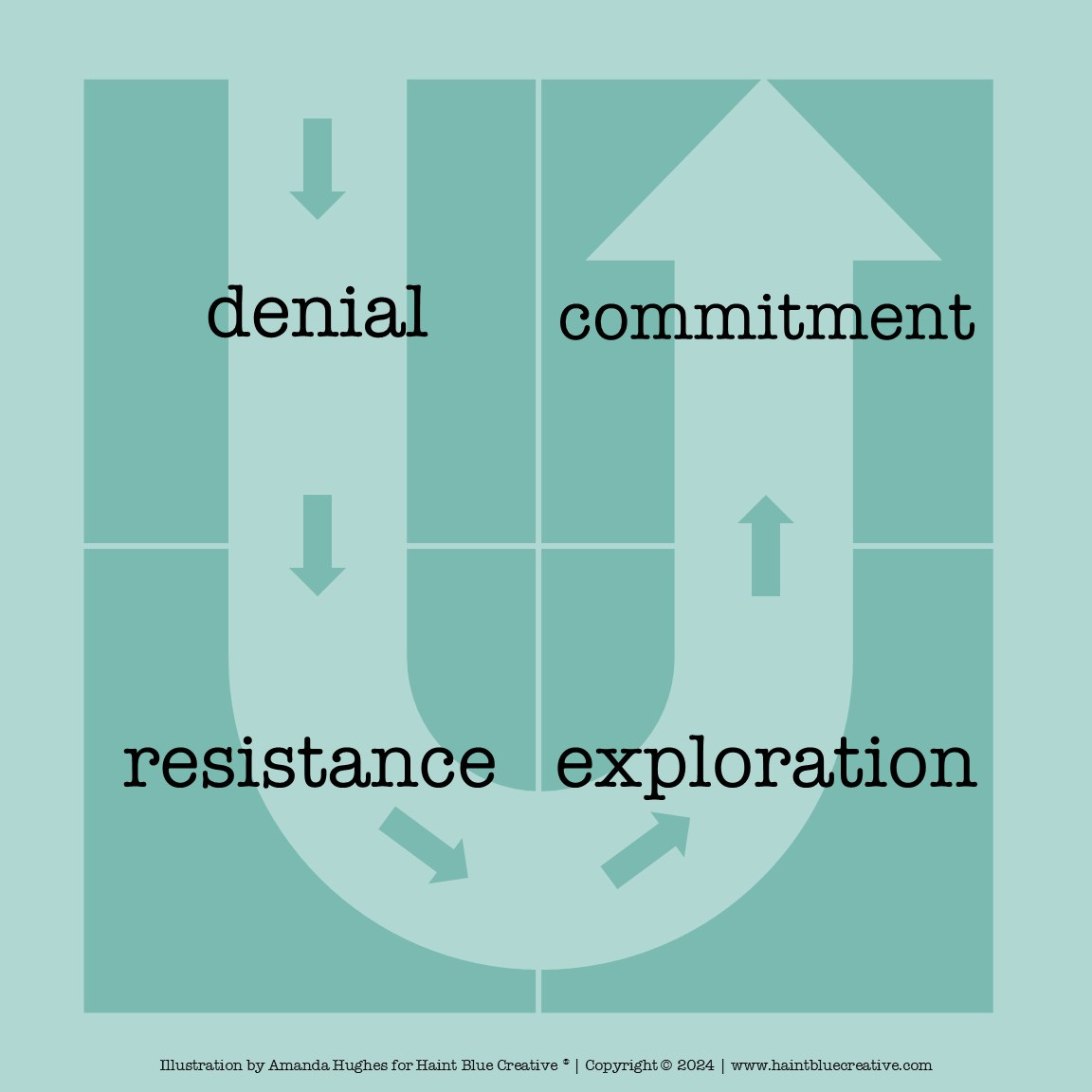


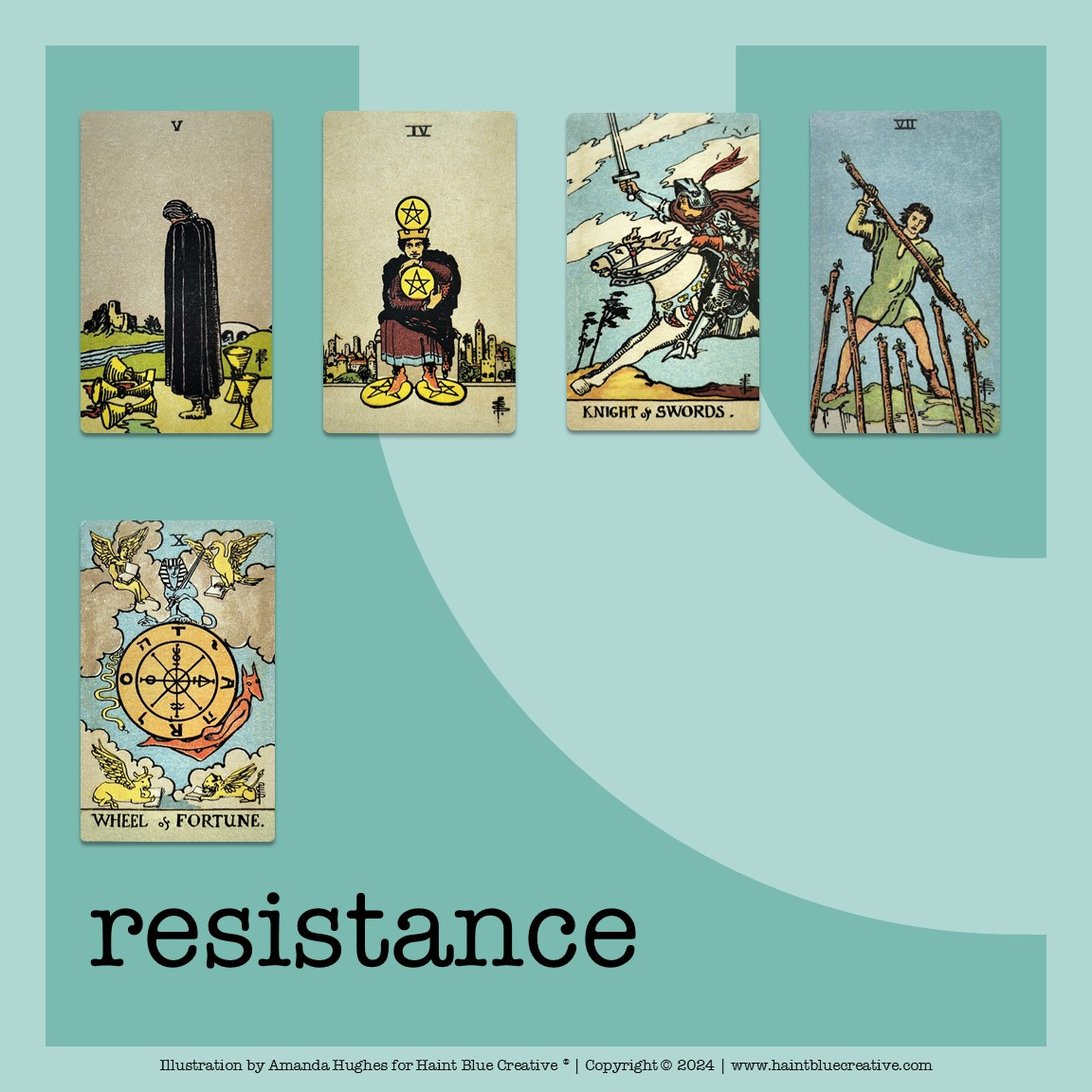
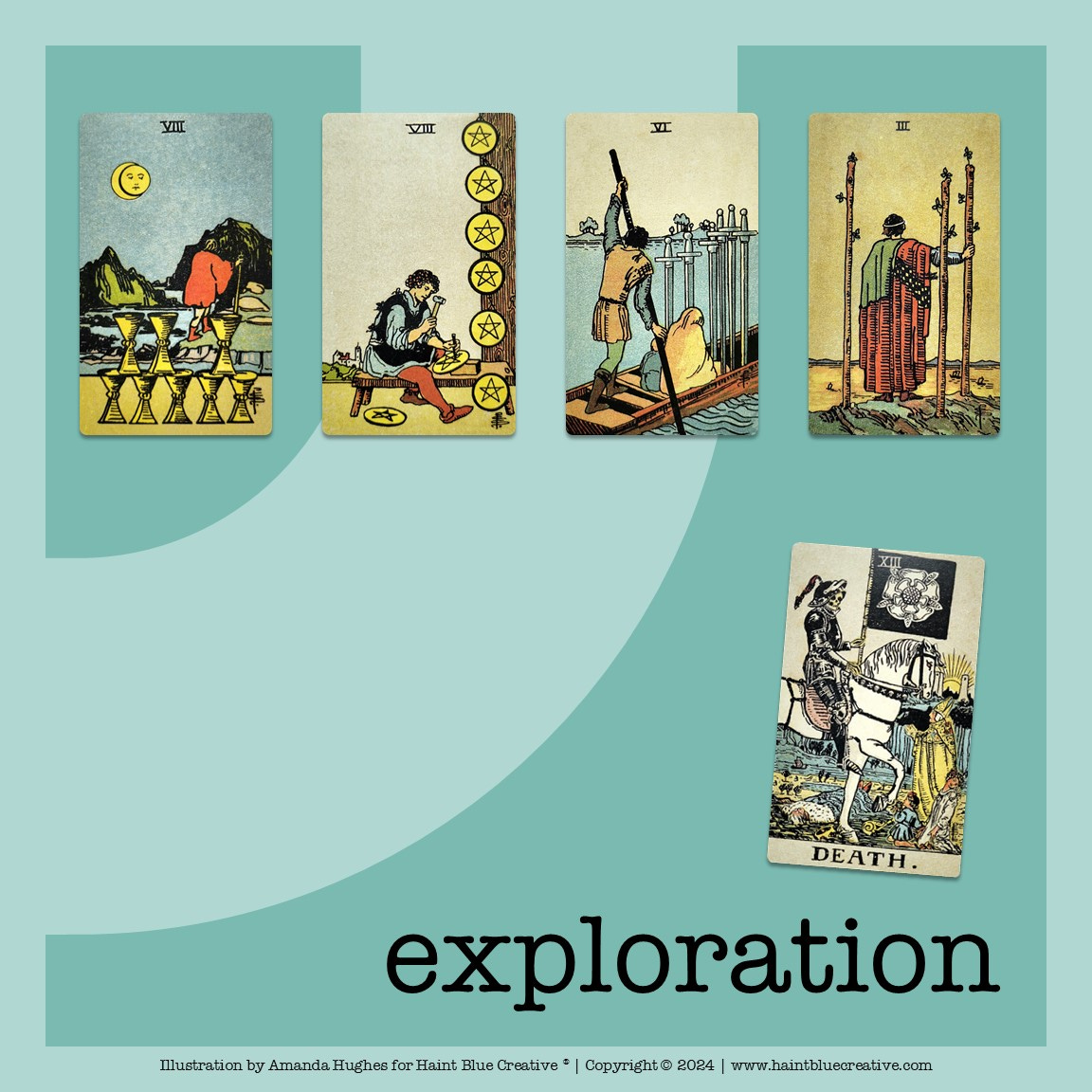
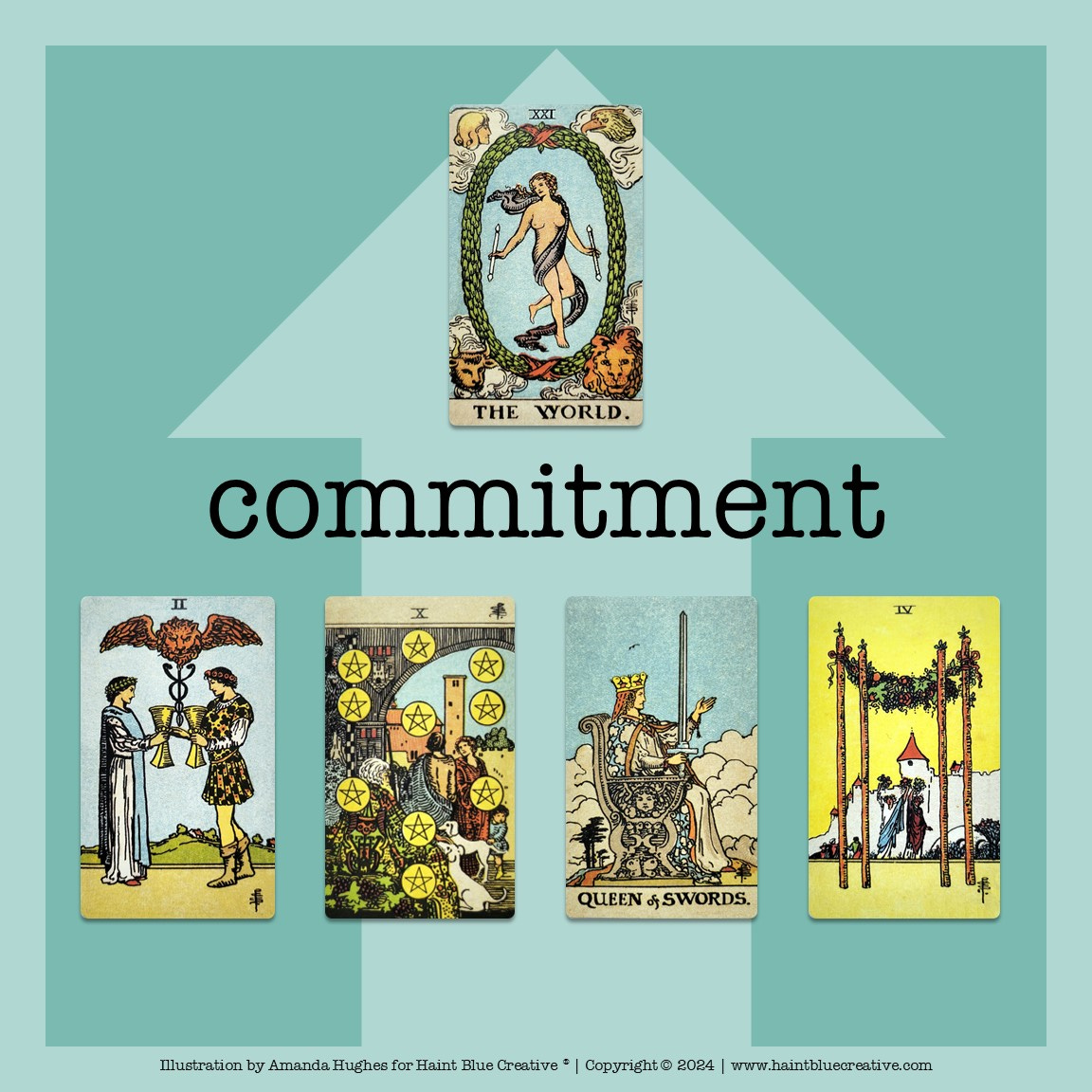
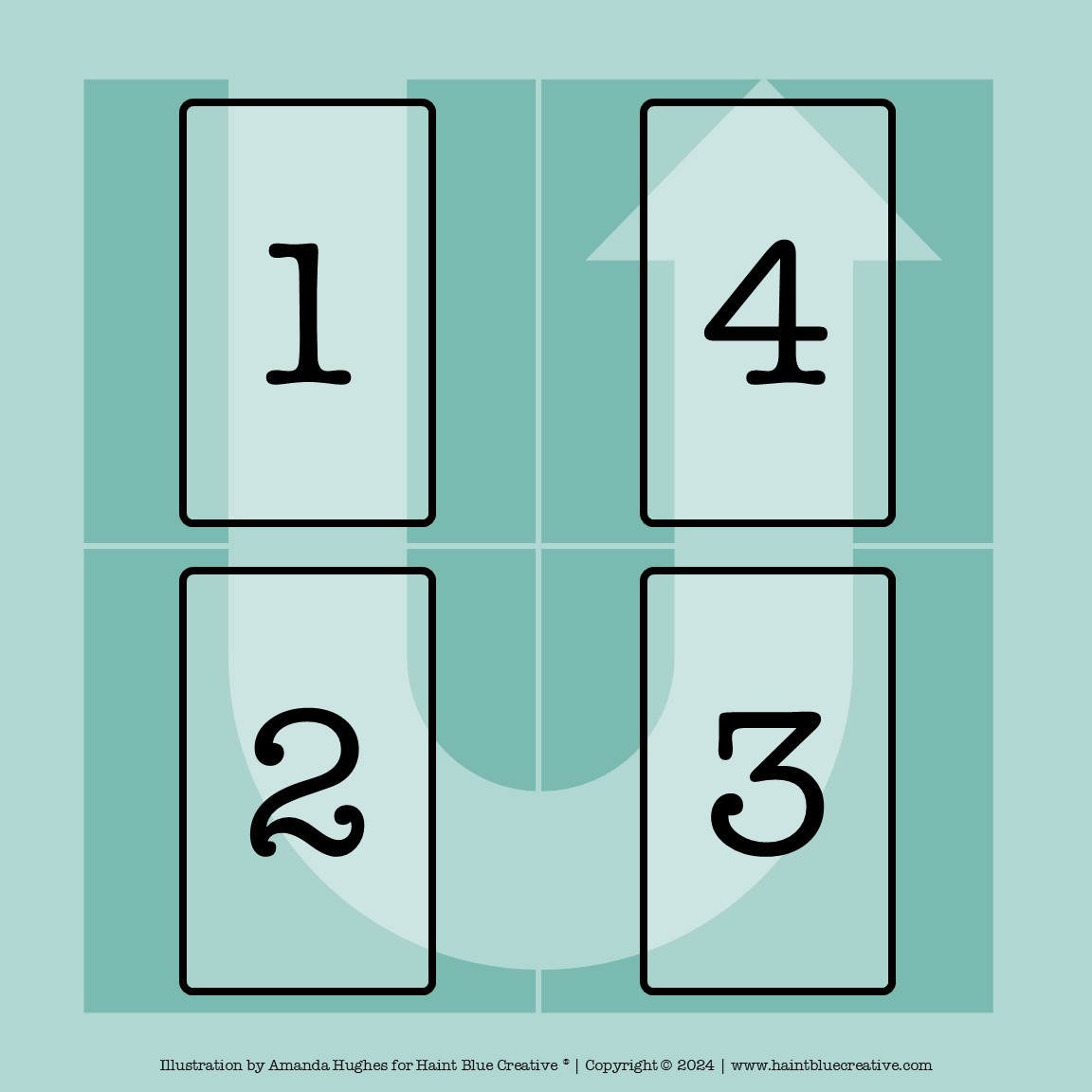
Love this approach. Thank you for making ‘corporate-y’ stuff useable.